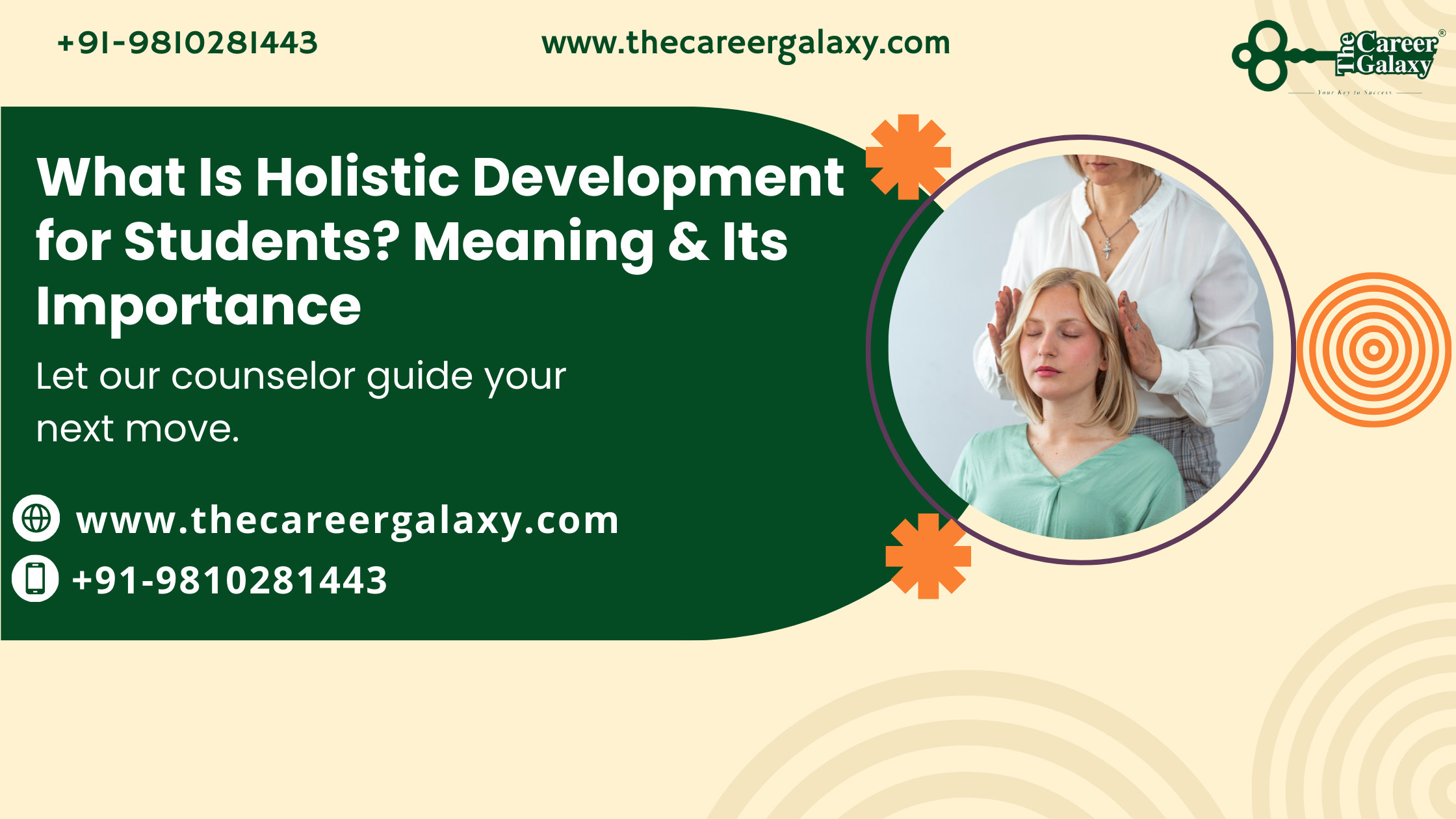
What Is Holistic Development for Students? Meaning & Its Importance
What Is Holistic Development for Students? Meaning & Its Importance
Holistic development is becoming a buzzword in the world of education, but what does it truly mean? More importantly, why should students, parents, and educators care about cultivating a well-rounded approach to personal growth and learning?
This blog explores the meaning of holistic development, its significance in education, the key pillars of development as inspired by Steiner Theory, and actionable steps to nurture all-encompassing growth in students. By the end of this read, you’ll understand how a comprehensively developed approach can help students not only reach their full academic potential but also thrive socially, emotionally, and physically.
What Is Holistic Development?
Holistic development is the process of nurturing every aspect of a student’s growth, ensuring they are fully developed academically, emotionally, socially, physically, and morally. Unlike traditional education, which often focuses primarily on academics, holistic development aims to integrate various elements of learning into an interconnected framework.
The goal is an integratively developed individual who is self-aware, capable of critical thinking, empathetic, and well-equipped to face the challenges of the modern world. This kind of all-inclusive development prioritizes lifelong learning and helps students build connections between different areas of their lives.
Key Features of Holistic Development:
- Interconnected Development: Bridging the relationship between emotional, intellectual, and physical growth.
- All-Encompassing Development: Celebrating individuality while understanding shared human values.
- Real-Life Application: Learning experiences that stretch beyond the classroom into real-world scenarios.
Why Holistic Development in Education Matters
For years, success in education was measured by grades and academic success, but the world is changing rapidly. Schools and parents are beginning to recognize that being exhaustively developed is about more than just excelling on exams.
Here’s why holistic development is essential in today’s world of education:
- Prepares Students for Life
By focusing on real-world skills like empathy, team collaboration, and emotional intelligence, an all-encompassing development prepares students to succeed in future personal and professional scenarios.
- Encourages a Balanced Life
A completely developed individual understands how to balance academics, relationships, physical health, and leisure.
- Builds Resilience
When students are developed thoroughly, they learn how to face challenges calmly, manage stress, and bounce back stronger.
- Promotes Well-Being
Activities that nurture creative and emotional growth play a significant role in mental wellness.
Key Aspects of Holistic Development in Steiner Theory
Developed by Rudolf Steiner, the Steiner/Waldorf educational theory emphasizes equipping learners not just intellectually but also socially, physically, and morally. His approach prioritizes interconnected development, ensuring students grow comprehensively.
Here’s how the Steiner Theory breaks down the key elements of holistic education:
- Physical Development
- Activities such as sports and physical play not only keep children healthy but also teach teamwork and coordination.
- Example in education: Gym sessions, yoga classes, or even gardening workshops.
- Cognitive Development
- Critical thinking and creativity are nurtured through open-ended assignments or problem-solving exercises.
- Example in education: Artistic activities, challenging puzzles, and STEM projects.
- Social and Emotional Growth
- Activities that allow students to work collaboratively enhance empathy and interpersonal understanding.
- Example in education: Community service or group discussions on moral dilemmas.
- Spiritual and Moral Education
- Developing an understanding of values fosters ethical decision-making and inner peace.
- Example in education: Gratitude journaling, mindfulness sessions, or philosophy classes.
How to Nurture Holistic Development in Students
Whether you’re a parent, an educator, or a student yourself, small, intentional actions can lead to completely developed individuals. Here are six strategies to foster holistic growth:
1. Understand the Unique Needs of Each Student
Growth isn’t a one-size-fits-all process. Start by identifying a child’s strengths, interests, and areas for improvement. Individualized learning plans (ILPs) can work wonders here.
2. Encourage Experiential Learning
Use hands-on projects, role-playing, and outdoor education to encourage real-world problem-solving. For example, a local field trip to a historical site brings classroom history lessons to life.
3. Integrate Emotional Intelligence Training
Encourage students to recognize, understand, and manage their emotions. This can be achieved through simple activities like journaling or group emotional reflection sessions.
4. Focus on Building Interpersonal Skills
Encourage group work, peer reviewing, and debate clubs to ensure that students grow socially as well as intellectually.
5. Adopt Mindfulness Practices
Meditation, yoga, or even breathing techniques help students become more self-aware and remain present in the moment. These skills not only benefit life but foster academic focus as well.
6. Encourage Creativity Through Art and Music
Music, painting, or theater can bring an all-inclusive sense of joy while promoting self-expression and innovation.
Final Thoughts
Holistic development is much more than just a buzzword in education; it’s a necessary blueprint for nurturing students who are fully prepared for their futures. Parents, teachers, and educational systems can work together to foster an environment of all-inclusive growth.
Whether adapting Steiner Theory or using modern tools, focus on strategies that lead to thoroughly developed minds, hearts, and bodies. These efforts will create students who aren’t just successful academically but are compassionate, innovative, and resilient in every way.
Empowering the next generation starts with prioritizing interconnected development. Make your school or home a hub of holistic education today.
FAQs
Q1. What is an example of holistic development in education?
A classroom activity designed to celebrate diversity and teamwork is a great example. For instance, an essay workshop where students collaborate to write about their cultural backgrounds can encourage connected growth.
Q2. Can holistic development only take place in schools?
No. While schools offer great environments, parents can engage their children in outdoor sports, hobbies, and simple honest discussions to inspire growth at home.
Q3. What are the biggest challenges to achieving holistic education today?
Balancing academics with creativity is often challenging. A lack of awareness is another factor, although growing advocacy is slowly resolving this.
